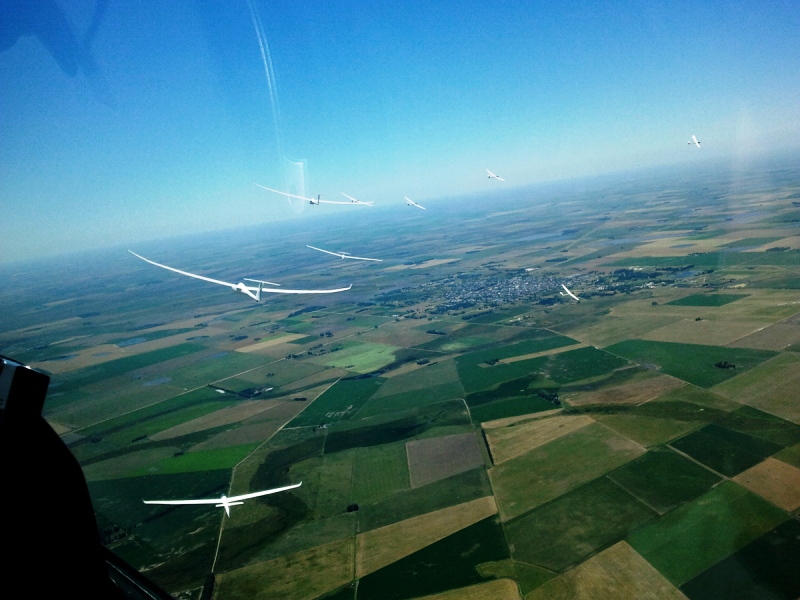PAW for gliders.
As many will know, I adapted two PAW units for use in gliders. This has borne mixed results.
... The hardware needed adapting with a battery, dc converter, amplifier, GL isolator, and speaker - all in a new box (no cooling fan in this box, just a vent over the ADSB dongle...). This adaption seems to have worked quite well, and technical details are available.
... Due to their bubble canopy, the Kobo is the preferred display in gliders (no screen reflections or bright-outs). But the Kobo is proving to be a troublesome unit, as it is too complex (too much button pressing) and has issues connecting with the PAW. (It will connect when working with XC-Soar, but not very well when using the web-browser and PAW Radar.) Some of this may be due to the age of the Kobo units, which are two years old. Better results were obtained with a new Kobo.
... Both the PAW and the Kobo give off RF, which interferes with the glider radio. The PAW gives off a lot of RF on starting, but then settles down. The Kobo is leaky all the time. It may be better to have the PAW in an aluminium box to cut this RF down, with all aerials being remote. Still looking at what to do with the leaky Kobo. The RF is not coming from the DC converter, as a 5v battery produced the same result. (But it was noted that the Flarm Mouse unit on another club glider did much the same.)
... The start-up procedures on the Kobo are too complex. There is resistance to using the PAW anyway, and having to press too many buttons on the Kobo means some pilots simply switch it off. In contrast - the Kobo also runs XC-Soar (a Nav program). And it has somehow been configured so that when you turn the Kobo on, XC-Soar is the first page. You only need to press 'FLY', and it is away. If the first page was re-configured to present 'PAW Radar' (perhaps PAW or XC-Soar) it would be used by everyone. But at present, I have to dial the Kobo into the PAW each morning, otherwise it is not being used.
... Calls and Warnings.
Not enough data on this yet, because of under-usage. Certainly there are less audio warnings than people expected, because close gliders often stay within a PAW audio zone. But there is no collision warning. (Sky Demon does give a collision warning - but only if you use the S.D. Nav system.)
Note: Gliders often fly in formation. In competitions, you might see 20 gliders, all in the same 500m-wide thermal, all circling together).
The little Flarm system we have on another glider does give a collision warning. It is a very simple unit that ONLY tracks the closest contact it can see, and with a few led lights gives a rough bearing and an above-below indication. And when someone is on a collision course, it beeps three times. It sort of works, but there are no selections on the system (so it can give indications of an aircraft 3,000 ft below you), and the collision warning is far too late.
SUGGESTION...Perhaps the same might be done with PAW audio warnings. You dont need a warning of EVERY contact in your area, only the closest ones. So perhaps the PAW could be filtered so that only the CLOSEST TWO or THREE contacts trigger a warning. And as another (third or fourth) contact wanders in, and becomes closer than the others - it takes over as being one of the closest three that trigger warnings. Just a thought....
Also - the b/w Kobo display is not as good as an iPhone, because there are no colour changes as a contact moves closer to you. The closest contacts on the PAW Radar may need highlighting somehow, to make them distinct. Perhaps flashing occasionally, when they enter the closest zone. Perhaps synchronised flashing, when the audio alarm is triggered
... It would be nice to have different symbols or icons on the PAW radar screen, so that you know if you are getting close to a jet or to a hang-glider. Your reactions will be very different. The track-speed line is a good indication, but a different icon would be better still.
(NOTE - Ian says this mod is being considered, and may appear in a later update.)I will post more info, as it becomes available.
R
Devise a warning system for this lot - go on, I dare you....








